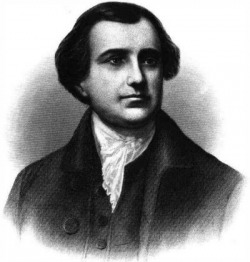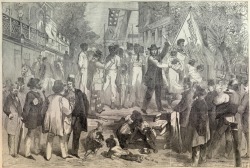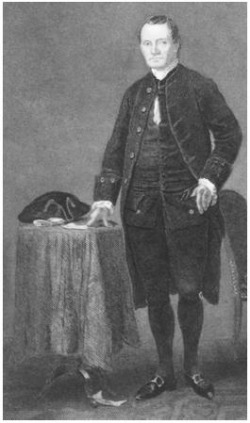Main Deliberations and Debates of the Constitution
Throughout the Constitutional Convention in 1787, there was much debate of the main ideas in the Constitution. Many new ideas that spawned from the Constitutional Convention are widely practiced today in many countries.
The Virginia Plan
The Virginia plan proposed the basis of the governmental structure of the union. Based on James Madison's ideas and presented by Edmund Randolph (F-VA), the Virginia plan first suggested the three branch governmental system.
- The Virginia Plan created a system of government split into three separate sections.
- Each branch's power balanced out the others.
- The Legislative Branch created laws.
- The Executive Branch enforced those laws.
- The Judicial Branch interpreted the laws and tried those who broke them.
- Although there was a check and balance system between the branches, the legislative branch was given considerably more power due to the democratic nature of it.
- The form of government suggested in the Virginia Plan was innovative in that such a broad republic had never been put into practice before.
The Issue of Slavery
Slavery was one of the most controversial issues of the Constitution. Due to the number of slaves in North America, all of the delegates understood that slavery would play a large role in the nation to come.
- Slaves accounted for over one fifth if the North American population in 1787. In the south, Forty percent of people were slaves.
- The framers debated extensively about whether or not slavery should be allowed into the constitution.
- James Wilson (F-PA) suggested that slaves should count as three fifths of a person when a census was taken. This Came to be known as the three fifths compromise.
The New Jersey Plan and the Connecticut Compromise
The New Jersey Plan and the Connecticut Compromise were two of the greatest achievements of the framers. They effectively created the system of government we know today.
- The New Jersey Plan and the Connecticut compromise were created as expansions to the legislative branch featured in the Virginia Plan.
- In the New Jersey Plan, William Patterson (F-NJ) proposed a legislative congress in which each state had one representative.
- This was antithetical to the Virginia plan, which proposed a congress in which the number of representatives were based on population.
- Roger Sherman (F-CT) proposed the Connecticut Compromise. This compromise created the House and the Senate, the basis of what is known as a Bicameral legislature. The Senate would have two delegates per state and the House of Representatives would have delegates numbered by population.
- The Connecticut compromise successfully synthesized the Virginia and the New Jersey Plans. This would later be known as the Great Compromise.



